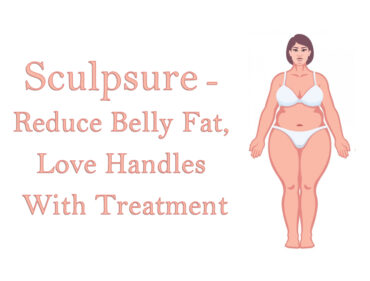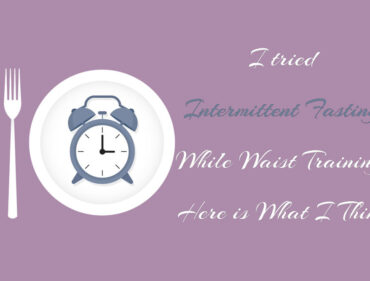5 Non-Invasive Fat Removal Surgeries Misconceptions – Key Details to Note
Happy New Year to all our elegant ladies, 2022 was indeed an awesome year! Did you achieve all your goals for the year? If you did not – chin up! Speaking of goals, last year we made it our goal to keep you up to date with all the secret procedures and kinks our darling celebs employ to slay us with those fabulous looks! We talked about various types of invasive and non-invasive fat removal procedures to help you put all the right curves in all the right places.
As a result, we received loads of questions and innuendoes about these procedures. Whilst we are glad for all your comments and questions, some questions were borderline misconceptions about the whole concept of non-invasive procedures. Hence, permit us to open the year by clearing out some of these misconceptions about non-invasive procedures with this article.
Due to the many perceived upsides to these procedures, it is easy to see why many people would prefer these types of procedures to their counterparts in the invasive category. Therefore, non-invasive fat removal procedures have become increasingly popular in recent years, as they offer a less invasive alternative to traditional liposuction. However, despite their growing popularity, there are still many misconceptions about non-invasive fat removal that can lead to confusion and unrealistic expectations. In our first blog post this year, we will address some of the most common misconceptions about non-invasive fat removal surgery.
Table of Contents
ToggleWhat are Common Misconceptions about Non-Invasive Fat Removal Surgery?
Non-invasive fat removal is a weight loss method – One of the most common misconceptions about non-invasive fat removal is that it is a weight loss method. Don’t we all love to have a magic fix for that lower belly pouch we carry around that won’t melt away? While non-invasive fat removal procedures can help contour the body and remove small pockets of stubborn fat, they should not be considered a substitute for a healthy diet and regular exercise. Non-invasive fat removal is designed to enhance the results of diet and exercise, not replace them.
Non-invasive fat removal is pain-free and has no downtime – Another common misconception is that non-invasive fat removal is completely pain-free and requires no downtime. While non-invasive fat removal procedures are generally less invasive than traditional liposuction, some patients may still experience some pain, discomfort, and/or swelling after the treatment. Additionally, some non-invasive fat removal procedures may require a few days of downtime to allow the body to heal.
Non-invasive fat removal can target specific areas of the body – Many people believe that non-invasive fat removal can target specific areas of the body with precision. While non-invasive fat removal procedures can target specific areas, they may not be able to remove all the fat in the area. It is important to have realistic expectations about the results of non-invasive fat removal
Non-invasive fat removal produces immediate results – Another misconception is that non-invasive fat removal procedures produce immediate results. However, the results of non-invasive fat removal may take several weeks or months to be fully visible. Patience is key and it’s essential to be aware that results may vary among different individuals.
Non-invasive fat removal is suitable for everyone – Some people believe that non-invasive fat removal is suitable for everyone. However, non-invasive fat removal may not be ideal for everyone, particularly those with certain medical conditions or who are overweight or obese. Non-invasive fat removal procedures are a great option for those looking to contour their bodies and remove small pockets of stubborn fat. However, it’s important to have realistic expectations and to understand that non-invasive fat removal is not a substitute for a healthy diet and regular exercise. If you’re interested in non-invasive fat removal, be sure to consult with a qualified surgeon to determine if it’s right for you.
Who Should Consider Non-invasive Fat Removal Surgery?
Non-invasive fat removal procedures are generally considered safe if you are a healthy adult who is looking to contour your body and remove small pockets of stubborn fat. For most individuals with a fear of the lancet, surgical blades and scars, this category of surgical procedure seem the best option right off the bat. However, there are certain individuals who may not be suitable candidates for non-invasive fat removal surgeries of any kind. Some of the attributes or conditions that might disqualify you from this procedure include:
- Individuals with certain medical conditions: Some medical conditions, such as heart disease or diabetes, may increase the risk of complications from non-invasive fat removal. If you have a medical condition, it is important to consult with your doctor or a qualified surgeon to determine if non-invasive fat removal is right for you.
- Individuals who are overweight or obese: Non-invasive fat removal is not intended as a weight loss method, and it may not be as effective for individuals who are overweight or obese. It is important to have realistic expectations about the results of non-invasive fat removal. According to this research paper by Zahra Alizadeh, F. Halabchi, and M. Tabesh of Medicine, Biology International Journal of Endocrinology and Metabolism,” the reported effects of such devices were mild to moderate and the mentioned methods have little or no effect on body weight reduction and the total percentage of body fat. On average, circumference reduction after noninvasive methods was 2 – cm.”
- Pregnant or breastfeeding women: Non-invasive fat removal procedures may not be safe for pregnant or breastfeeding women, as the effects of the treatment on the developing fetus or nursing baby are not well understood.
- Individuals with skin disorders: If you have a skin disorder such as eczema, keloids or psoriasis, non-invasive fat removal may not be suitable for you.
- Individuals with certain expectations: It is essential to have realistic expectations about the results of non-invasive fat removal. Non-invasive fat removal can help contour the body and remove small pockets of stubborn fat, but it may not produce dramatic results.
Note – It is important to consult with a qualified surgeon to determine if non-invasive fat removal is right for you. They will consider your overall health and fitness, your desired outcome and the specific non-invasive procedure you’re interested in.
What Are A Few Examples of Non-Invasive Fat Removal Procedures?
Here are a few examples of Non-invasive fat removal surgeries.
- CoolSculpting: This procedure uses controlled cooling to freeze and destroy fat cells. Once the fat cells are destroyed, they are naturally eliminated from the body. Coolsculpting procedure is FDA-approved for the treatment of the abdomen, thighs, flanks, chin, and upper arms.
- Liposonix: This is a non-invasive ultrasound treatment that uses high-intensity ultrasound energy to destroy fat cells. The procedure takes about one hour to complete and can be used to treat the abdomen, thighs, and flanks.
- SculpSure: A non-invasive laser treatment that uses heat to destroy fat cells. The procedure takes about 25 minutes to complete and can be used to treat the abdomen, thighs, and flanks.
- Vanquish: Vanquish is a non-invasive radiofrequency treatment that uses heat to destroy fat cells. The procedure takes about 45 minutes to complete and can be used to treat the abdomen, thighs, and flanks.
- UltraShape: is a non-invasive ultrasound treatment that uses focused ultrasound energy to destroy fat cells. The procedure takes about 45 minutes to complete and can be used to treat the abdomen, thighs, and flanks.
- VASERshape: VASERshape is a non-invasive ultrasound treatment that uses focused low-frequency ultrasound energy to destroy fat cells, and also uses massage to enhance blood flow and lymphatic drainage. The procedure takes about 45 minutes to complete and can be used to treat the abdomen, thighs, and flanks.
Many of these technologies and the application devices are approved by the FDA as safe and designed to target small areas of fat in targeted areas plus can only be used to target small pockets of fat in stubborn areas.
What Are Some of The Side Effects or Risks of Non-Invasive Fat Removal Surgery Known as Non-Invasive Body-Sculpting Surgery?
Non-invasive fat removal procedures are generally considered safe, but as with any medical procedure, there are potential risks and side effects. Here are a few general risks with this class of procedures:
- Swelling and Bruising: Some patients may experience swelling and bruising in the treated area after non-invasive fat removal. This is usually mild and should resolve within a few days.
- Pain and Discomfort: Some patients may experience pain and discomfort in the treated area after non-invasive fat removal. This is usually mild and can be managed with over-the-counter pain medication.
- Numbness: Some patients may experience numbness in the treated area after non-invasive fat removal. This is usually temporary and should resolve within a few weeks.
- Skin irritation: Some patients may experience skin irritation or redness in the treated area after non-invasive fat removal. This is usually mild and should resolve within a few days.
- Risk of infection: Non-invasive fat removal procedures carry a small risk of infection, as with any procedure that breaks the skin. To minimize the risk of infection, it is important to follow the post-procedure care instructions provided by your surgeon.
- Risk of unevenness or asymmetry: Non-invasive fat removal procedures may not produce perfect or symmetrical results. Some patients may require additional treatments to achieve the desired outcome.
- Risk of disappointment: Non-invasive fat removal procedures may not produce the desired result and the patient may be disappointed. Patients should have realistic expectations and understand the procedure before undergoing it.
A qualified surgeon or dermatologist will inform you about the specific risks and side effects of the procedure of your interest.
In summary, it’s important to note that each of the above procedures and indeed all procedures in this topic category works differently, have different downtime and may produce different results. It is important to consult with a qualified surgeon or dermatologist to determine which non-invasive fat removal procedure is best for you. This is a brand-new dawn and an awesome opportunity to crush all those goals and more. Trust us to be here to help you smash all your body-beauty goals plus, provide major tips on how to get and maintain that summer body you deserve all year long.




